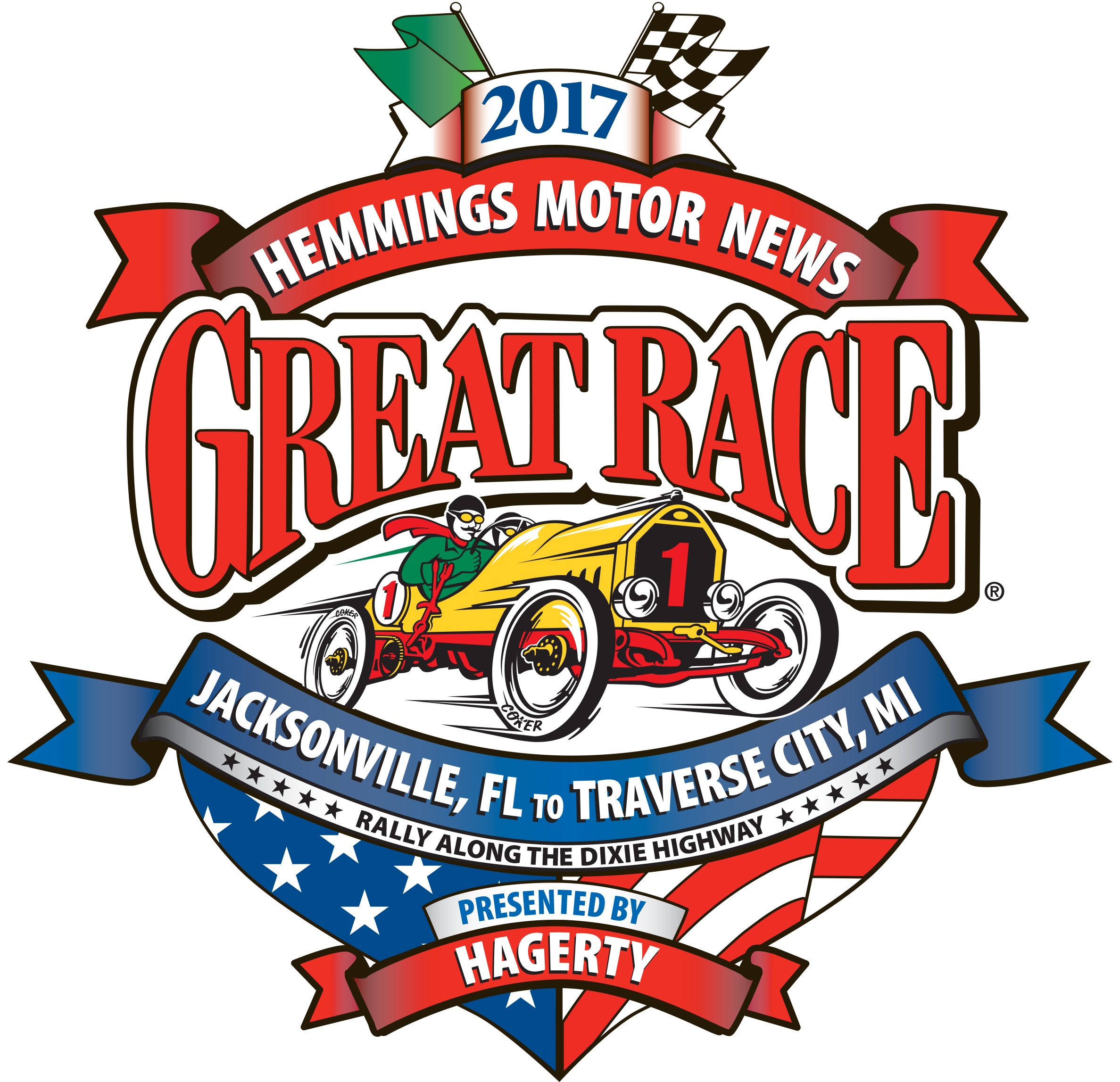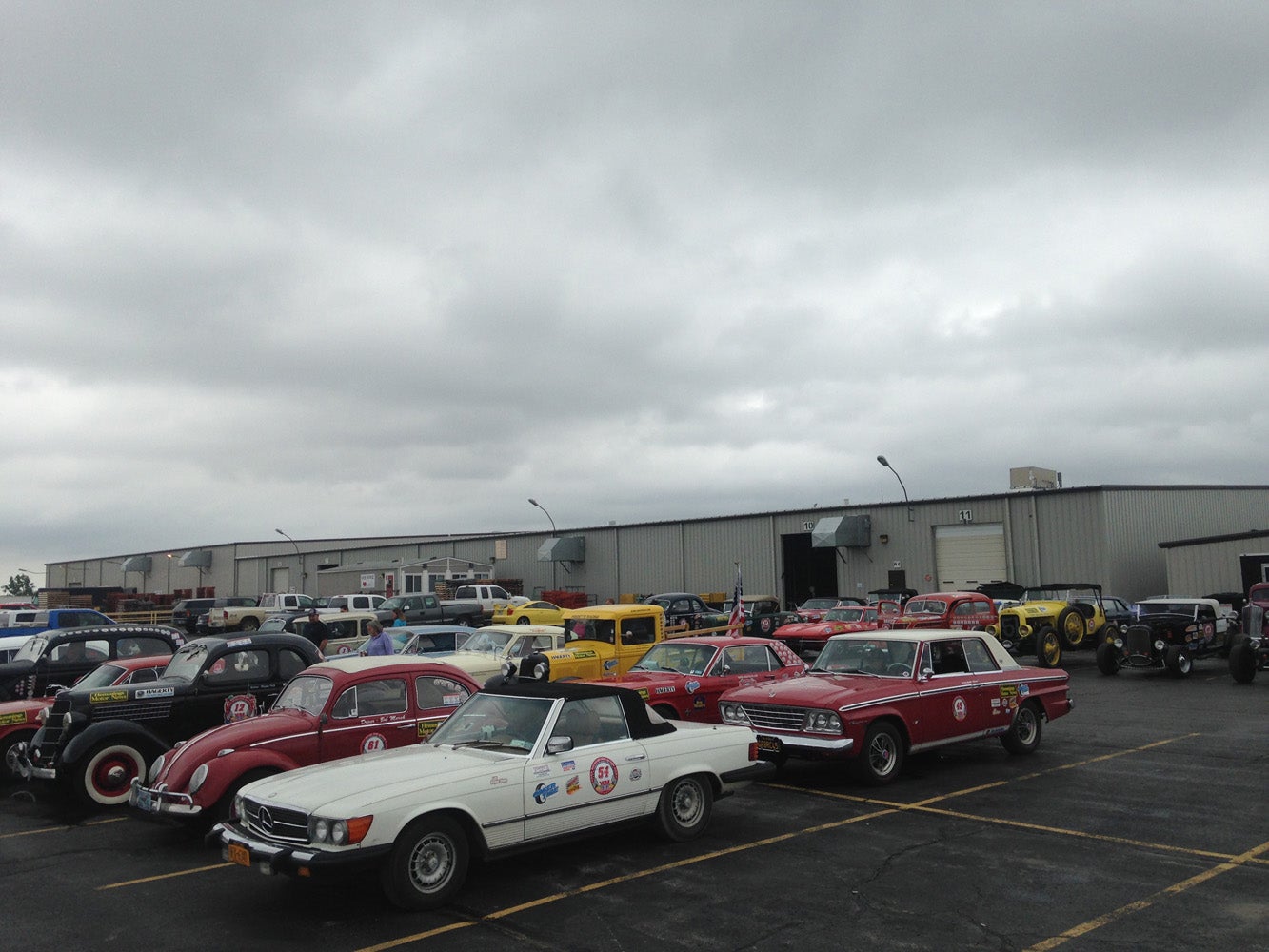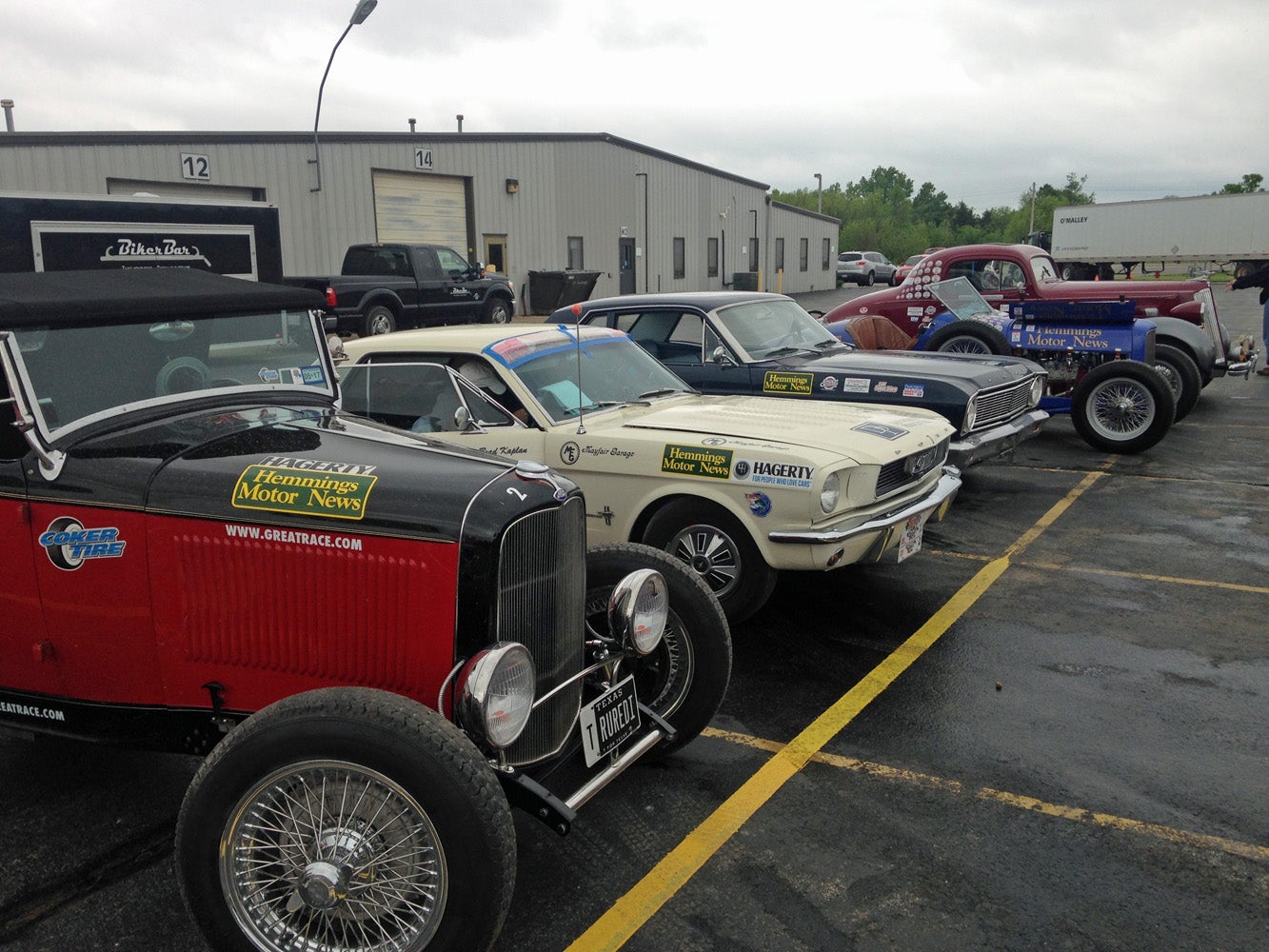By Steve Hedke, who will be representing ACM with his wife Janet and their daughter Allison in The Great Race June 24 – July 2. They are posting regular updates on their adventure here.
Perhaps you’ve been interested in Great Race but didn’t know if you’d like it. After all, it’s a pretty big commitment in both time and money without really knowing what’s involved. It’s one thing to explain to someone that it’s a “Time-Speed-Distance Road Rally where you are given the time and the speed but not the distance.” That might make sense to you if you’ve run SCCA TSD (Time-Speed-Distance) rallies before, but many people enter Great Race with no previous rally experience at all.
[PHOTO] This is the official start of a timed ‘leg’, and there are usually 4 to 6 legs per day. We are lined up in our official ‘order of start’, determined by a random drawing the day before. We are behind Peter LaMountain’s beautiful ’64 Impala SS today: on the trunk it says ‘Caution: Rally Car-Quick Stops and Turns’. Ahead you can just make out the speed limit sign, which is the starting point, and a car pulling away on their exact minute less the time it takes to accelerate to the assigned speed. Each car leaves one minute apart. If everything goes correctly, you won’t see them again for a while. In Peter’s case, we saw him a few times, as he passed us to get back into his ‘minute’ after making a wrong turn or two. Note that there are no race officials to ‘flag’ us off: we must calculate our own start time. The leg ends when we pass the checkpoint at an unknown location an hour or more away.
The best way to get started is by participating in a regional rally. They are 4-day weekend events that use the same rules as Great Race, including trophies and cash prizes. The big differences are that the entry fees are lower, you return to the same hotel every night and you can use whatever car you’d like: it’s not uncommon for beginners to simply use their daily driver or a rental. The regionals also include a “˜ground school’, where experienced racers explain how it’s done. After the first practice rally, there is another training session called “˜what am I doing wrong?’
On April 25 we loaded our 1964 Studebaker Daytona onto the trailer and headed east to Joplin, Missouri for the annual Vintage Car Rally Association’s All Stars for Autism event. This regional rally has become an important “˜tune-up’ for both rookie and experienced teams preparing for the “˜Big’ race. It’s also a complete race in itself. VCRA has raised over $600,000 for autism awareness over the 12 years it’s been running. It’s always held in the same general area: southern Missouri, eastern Kansas, northern Oklahoma, and parts of Arkansas, often incorporating parts of old Route 66. Despite the fact that it is 1200 miles from home, we wouldn’t miss it: the countryside is beautiful, it’s great to visit with our rally friends and most important of all, we need the practice!
[PHOTO] Lunch stops are one of the only places to see all the race cars together. Under dark skies we are at a lunch hosted by race sponsors BW Trailer Hitches in Humboldt, Kansas. This is one of many local industries we get to visit while rallying. BW makes the highest quality bumper and fifth wheel hitches right here in America. Factory tours were given, and they had a great assortment of box lunches for us to choose from. The newest race car in the photo is the Mercedes: their ’36 Ford broke a tranny just before leaving to come to the rally. The oldest rally car is the yellow 1916 Hudson speedster.
VCRA rallies test both team and car by running the maneuvers close together – being able to think fast is critical. If the car has any problems they will turn up pretty quickly as well. On the first rally day, which is used as “˜practice’ and does not count to your final score, we had a great result: third place overall! On the first day of competition we slipped back to 8th place due to some turn numbers not working out as practiced. No problem, there were still two more days of rallying and we can catch up.
Well, the weather decided to interfere. We will rally in rain, but if the roads are flooded or thunderstorms threaten the checkpoint crews we have to stop for safety. On the big race we will simply “˜transit’ to the next town, but on a regional where the sky unloads and the rally routes flood we spent the day hanging out in the Joplin hotel lobby with several of the 59 teams entered.
[PHOTO] More rally cars at BW Trailer Hitches in Kansas. The ’32 roadster in the foreground belongs to Great Race Legend Curtis Graf, who has run every great race since its inception in 1983. Note the spiffy Jaguar center lock wire wheels: as I understand it, the Jag hub adapters use the same bolt spacing as the later Ford spindles.
An impromptu seminar was arranged where the top teams would make themselves available to answer questions about how they run specific maneuvers. This proved quite useful, and it was a definite advantage for those who were there: there’s never enough time in Great Race to go in to this sort of detail. We have been doing this since 1999 and are still learning things!
Anxious to give what we learned a try, we set out on Sunday, but the weather did it to us again. We were only able to get 2 timed legs in, and we didn’t do very well on them. Our problem was that mechanical issues were developing on the car, and combined with the slick roads we experienced our first actual 180 spin out! There was no traffic and we didn’t hurt anything but our time, but we were glad the race was over early.
There is plenty of time to fix the car before it gets shipped to Florida in June, and we’ll talk about that next time.
Steve, Janet, and Allison
Greatrace 45




Comments (1)
[…] Picking up where we left off, we brought our 1964 Studebaker Daytona hardtop home from the VCRA rally in Joplin Missouri with stuff wrong with it. After two Great Race events and thousands of miles of driving we’ve only experienced minor issues. But it is an old car, and stuff happens, especially when pushing it hard. That’s why you tow it there and back. […]